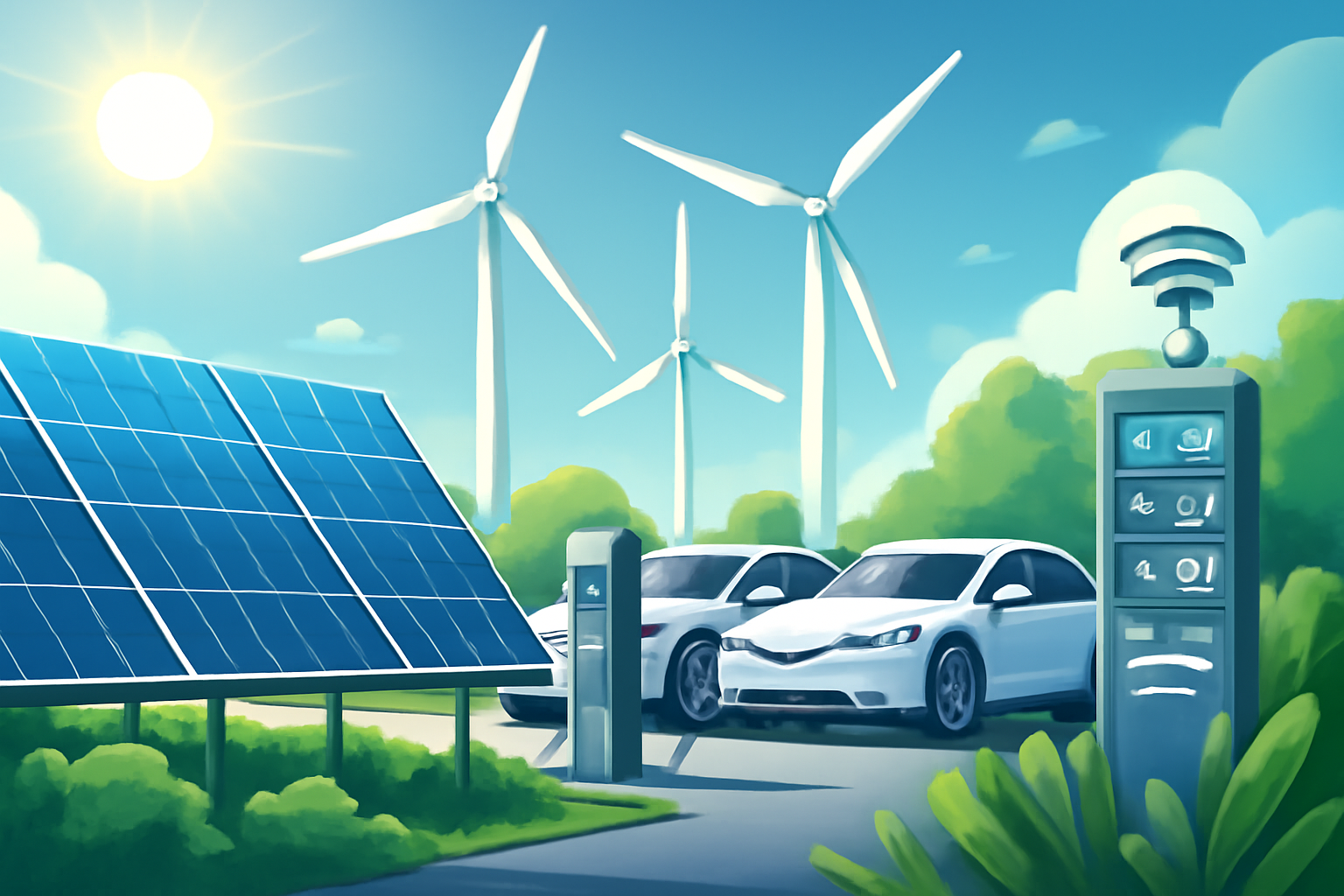2025 marks a turning point in the adoption and development of green technology worldwide. As governments, businesses, and consumers rally to address the climate crisis and build resilient societies, a wave of groundbreaking innovations is transforming how we produce energy, manage resources, and live sustainably. This article explores the most significant green technology innovations shaping our world this year, dives into real-world examples, and offers practical insights for individuals and organizations looking to embrace the future.
Section 1: Why Green Technology Matters More Than Ever
The climate emergency has accelerated investments and regulation around clean technologies. Carbon emissions, global warming, pollution, and resource depletion mandates urgent action—innovators now deliver solutions that not only minimize environmental impact but also unlock new economic opportunities, efficiency, and social progress.
Global Drivers
- Policy action: Countries have set ambitious net-zero targets for 2030-2050, spurring investment.
- Consumer demand: Buyers prefer cleaner brands, renewable energy, and sustainable lifestyles.
- Corporate strategy: Businesses position green innovation at the center of product development and supply chains.
- Social equity: Green tech fosters community well-being, health, and access to sustainable infrastructure.
Section 2: 2025’s Breakthrough Green Technologies
1. Renewable Energy and Storage
Solar, wind, hydro, and geothermal technologies have evolved, becoming more affordable, efficient, and scalable. Innovations in solar panel efficiency, floating wind turbines, perovskite solar cells, and solid-state batteries are at the forefront.
- Distributed solar systems use rooftops and water bodies to generate power while cooling panels for higher efficiency.
- Vertical wind turbines are now suitable for urban environments, with less noise and space requirements.
- Solid-state batteries boost storage capacity for households and electric vehicles, reducing reliance on fossil fuels.
2. Smart Grids & Artificial Intelligence
Intelligent grids manage energy distribution and consumption, integrating renewables efficiently and reliably. AI algorithms forecast energy demand, manage supply fluctuations, and optimize grid performance, from large utilities to small communities.
3. Carbon Capture and Storage (CCS)
CCS technology extracts carbon dioxide from factories and the atmosphere, storing it underground or using mineralization to lock CO2 into solid substances. Cheaper, scalable CCS options enable widespread adoption in power generation, cement, and heavy industry.
4. Green Construction
Emerging materials—carbon-negative concrete, bioplastics, recycled steel—revolutionize building sustainability. 3D printing, modular design, and low-impact construction reduce waste, energy use, and urban heat islands. Smart cities deploy IoT systems for optimizing energy, waste, and water management.
5. Electric & Autonomous Mobility
Electrification of transportation continues, with solid-state batteries improving EV range, faster charging stations, and smart transport grids. Autonomous vehicles integrate with traffic management and clean energy sources, reducing congestion and emissions.
6. Sustainable Agriculture & Food
AI, sensors, and robotics drive precision farming and vertical agriculture, saving water, fertilizer, and land. Lab-grown meat and plant-based proteins reduce livestock emissions, supporting food security and biodiversity.
7. Circular Economy & Advanced Recycling
Technologies now transform waste into valuable resources. Chemical recycling and upcycling regenerate plastics and metals, powered by AI-enhanced sorting robots. Digital product passports track the full lifecycle of products, empowering transparency and better choices.
8. Green Cloud Computing & Data Centers
Clean energy and efficient cooling solutions power the exponential growth of data centers. Carbon-neutral servers and smart energy management lower tech’s climate impact.
9. Eco-Design Consumer Electronics
Devices are easier to repair, upgrade, and recycle. Modular phones, biodegradable cases, and energy-efficient appliances extend product lifespans, reduce e-waste, and promote resource stewardship.
10. Water Conservation Technology
Smart sensors monitor water usage in homes, cities, and agriculture. Recycling grey water and desalination powered by renewables address water scarcity and support global resilience.
Section 3: Startups and Big Players Leading the Green Revolution
Notable Examples (2024-2025):
- Tesla’s dual-battery EVs: Increasing energy density and longevity in consumer vehicles.
- Google’s AI grid planning: Deploying predictive analytics for power grid resilience in California.
- ScootHero: Fleet management solutions and battery swap locations for emission-free urban delivery.
- REGENY: Smart charging for homes, businesses, and communities to enable the mass adoption of EVs.
- Framework & Fairphone: Modular electronics that can be repaired, upgraded, and recycled, cutting e-waste.
Section 4: The Big Impact—Numbers and Progress
By the Numbers (2025):
- Clean energy investments will surpass upstream oil and gas for the first time, with solar PV accounting for 50% of all cleantech investments.
- Renewable energy (solar and wind) comprised 90% of all new infrastructure built in 2024, a 57% increase over 2023.
- AI-driven energy management tools are improving grid forecasting accuracy up to 700%.
- One electric car saves an average of 1.5 million grams CO₂ each year, and city-wide smart grid deployment can cut energy waste by 30%.
Section 5: Challenges and Opportunities
Green technology adoption faces challenges:
- Scalability: Moving from pilot and niche projects to mass-market impact.
- Regulation: Harmonizing global standards, certifications, and incentives.
- Greenwashing: Ensuring true sustainability, not just marketing.
- Investment: Mobilizing private and public sector capital for R&D and deployment.
But the opportunities are vast. Green innovation is at the heart of next-generation jobs, economic growth, social well-being, and global climate objectives.
Section 6: How to Support and Adopt Green Tech
Practical steps for individuals, organizations, and communities:
- Choose eco-designed products and modular electronics.
- Invest in renewable energy at home (solar panels, batteries).
- Advocate for local government to support smart grids and clean infrastructure.
- Support startups and brands committed to transparent sustainability.
- Monitor and optimize energy usage with smart meters and sensors.
- Practice circular economy habits: repair, recycle, and upcycle.
Conclusion: The Path Forward
Green technology is not a distant dream—it is transforming every aspect of life in 2025 and unlocking new solutions for a livable planet and prosperous economy. The innovations of today will decide the sustainability of tomorrow. Everyone has a role in accelerating adoption, driving change, and building a better future. Let’s innovate, invest, and inspire—to make sustainable living the default for all.



